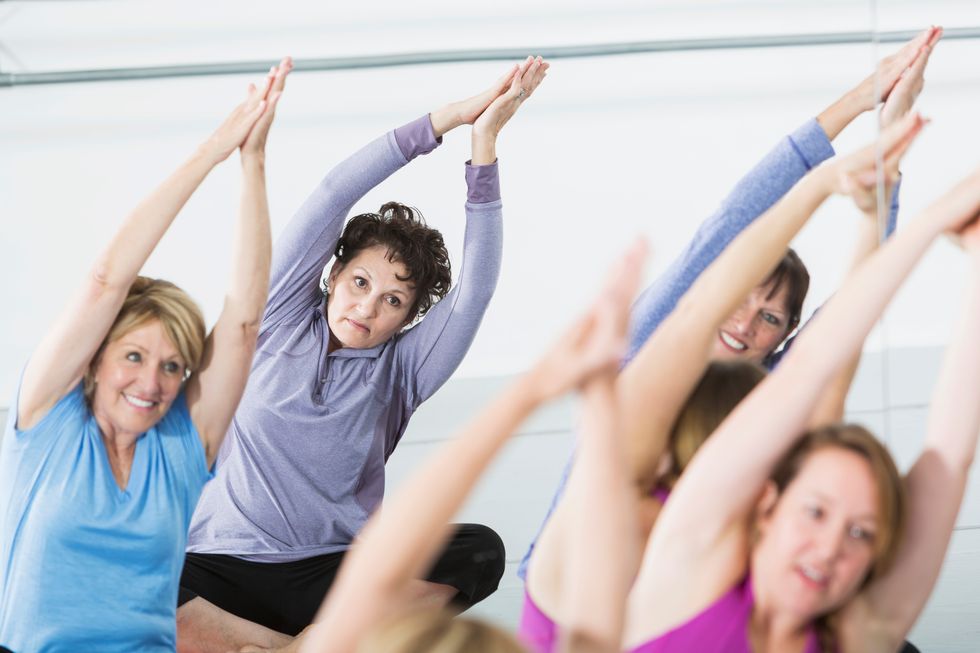Getting fit … getting more exercise … going to the gym more often … getting healthy.
Whatever you call it, year after year, it's one of the top New Year's resolutions.
But for all our good intentions, only a small percentage of people actually fulfill this resolution. How do I know this?
- Statisticians and researchers have a field day compiling numbers to prove me right. They say 45 percent of people make New Year's resolutions each year, but only 8 percent keep them.
- It's easy to conduct my own informal research; just look around at how the crowds at the gym sharply dwindle after the January rush.
- "I don't know what happened; I was on such a roll." That's a common refrain. Also heard: "Ugh, I can't do this anymore."
Read more about 8 Ways to Fail at Your New Year's Resolutions.
So, what happens to our all-out promise to do it better this time—to finally make this year our fittest year ever?
Here are some of the most common reasons, along with some easy fixes.
-
I'm too busy.
Sure, life can get hectic with work, family obligations and just plain keeping up. And it can be tough to fit one more thing into that already-overflowing day. But it can be done. It's a matter of prioritizing your health.
- Schedule exercise time, just like you'd schedule a doctor's appointment.
- Get it out of the way early. You're less likely to make excuses if you exercise first thing in the morning. Lots of home fitness resources are available, from online fitness aps to fitness DVDs to exercise bikes (Peloton has an in-home version that streams live classes or you can purchase less expensive versions from sites like Amazon). Click here for tips on becoming a morning person.
- Fit it in whenever you can. Maybe there's no time in the morning or you're not a morning person. No matter. Do it late in the day or at night, if that works for you.
- Look for any opportunity to get your body moving: eat lunch at your desk and use the time saved to work out; run up and down the stairs to get a good sweat going; do things like jumping jacks, lunges, knee-highs and push-ups at home (you can even do these while you watch TV).
- I'm too tired. I can sympathize. The demands of life can not only drain you physically, but emotionally, too. Although this might sound counterintuitive, it's true: When you're too tired to exercise, exercise! Once you start, you'll see. Your body will kick in and release all kinds of neurotransmitters and natural chemicals like cortisol, dopamine, serotonin and endorphins to fuel your workout with positive feelings, happiness, euphoria and energy.
- I don't have enough time. Remember this: Some exercise is better than none. Your body and mind can benefit from even short exercise sessions. Try breaking up 30 minutes into multiple 10-minute sessions throughout the day. Or try an "active lifestyle" approach with things like shoveling snow, raking leaves, pacing while talking on the phone or lugging things up and down the stairs. Researchers say that it all counts toward meeting recommended federal guidelines. One other interesting recent finding is that running for as little as five to 10 minutes a day could greatly reduce your risk of heart attack and stroke.
- It's boring. Some people would rather be anywhere but walking on a monotonous moving platform or pushing pedals around and around in a circle. If a treadmill or stationary bike is not your thing, find something that is. Maybe it's a Zumba class, swimming, running, biking, yoga or other group activity. Or book a few sessions with a personal trainer if you can afford it. Social support helps a lot of people stick with their exercise habits—accountability counts! If you want to get outside, learn how to start a walking routine.
- I got injured and need to take a break. Having unrealistic expectations or starting with too much, too quickly, can lead to injuries or burnout. If you go all-out by pledging to hit the gym five days a week when you're not really in shape, you're bound to be a quitter sooner rather than later. Start small, be realistic and work up to your goal. Most of all, be patient with yourself.
Although there's no one-size-fits-all road to fitness, there are lots of ways to overcome excuses and barriers to getting—and staying—fit. The important thing to remember is to recognize that it does take some work, but in return, you'll reap a huge health payoff!
Exercise your right to read more:
Menopausal Weight Gain: Fighting Back With Exercise







